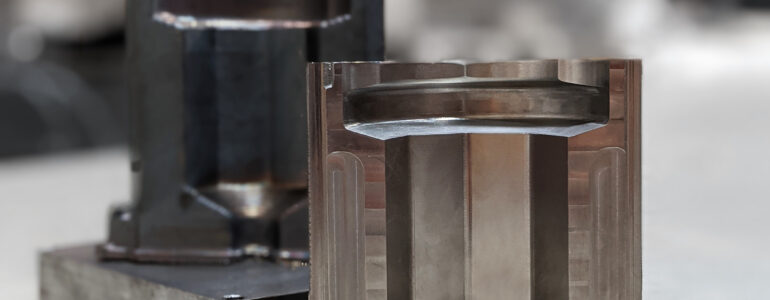29/03/24

Glass molds are used in the glass industry for shaping molten glass into various forms such as bottles, containers, and glassware. The Glass Mold Core, being a crucial part of the mold assembly, plays asignificant role in defining the shape and structure of the final glass product.
Printing Parameters
System : Meltio M450
Material : Stainless Steel 316
Gas : Argon
Gas Flow : 10 liters per minute (lpm)
Size : 158.5 x 79.3 x 147 mm
Weight : 7.30 kg
Laser Power : 1200 W
Layer Height : 1.2 mm
Printing Time : 29:30:00
The choice of SS316 stainless steel for the Glass Mold Core is based on its specific properties that
make it suitable for this application. SS316 is resistant to corrosion and oxidation, making it highly durable and capable of withstanding the harsh conditions of the glass manufacturing process, which involves exposure to high temperatures and corrosive agents. Additionally, SS316 offers good mechanical strength, ensuring that the Glass Mold Core maintains its shape and integrity during the glass forming process. By utilizing SS316 manufacturers can achieve optimal performance, extended lifespan, and improved producvity in glass production operations. The high-quality material provides resistance to pitting, crevice corrosion, and intergranular aack, ensuring the mold core remains in excellent condition even after prolonged use.
Various manufacturing methods, including CNC machining, casng, forging, and welding, are employed to produce Glass Mold Cores. These methods involve shaping the material, melting and pouring it into molds, applying heat and pressure, or joining components together. The selection of the manufacturing technique depends on factors such as design complexity, required tolerances, core size, and available resources. By utilizing these methods, high-quality Glass Mold Cores can be created to meet specific requirements.